Procol • February 24, 2025
Procurement Spend Analysis: Why is it Important for Business?
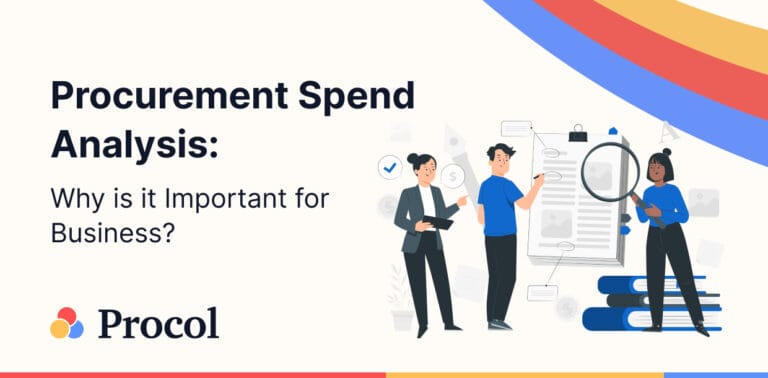
Introduction
Controlling business spending is a crucial aspect of any business, and procurement spend analysis lets companies cut costs and improve the procurement process. Spend analysis is about getting visibility and insight to make business decisions for its success. Thus, checking the spending pattern makes looking for opportunities to facilitate operations, cut costs, and build supplier relationships easier.
Procurement spend analysis helps companies break down expenses across different categories, vendors, and departments. This guide will explain procurement spend analytics in more detail.
What is Spend Analysis?
Procurement spend analysis is a method that impacts how businesses collect and examine data about their procurement spending. This approach uses analytic tools to find ways to cut costs, boost business productivity, and create value beyond just saving money. It’s a critical process that helps companies grasp their spending patterns and cost-saving opportunities and use data to make choices that improve their procurement processes. This practice turns raw data into useful information, giving insights into an organization’s procurement and spend analytics activities.
Key components
The procurement spend analysis process typically involves several key components:
- Data collection: Gathering spending data from all sources within a company, including various business units and the entire organization.
- Data cleansing: Cleaning the data for errors and applying standard formatting to ensure consistency and accuracy.
- Data categorization: Grouping spend data by supplier parent name and standardized spending categories.
- Data analysis: Examining the organized data through analytical tools to obtain meaningful insights relevant to the organization’s objectives.
- Reporting: Generating real-time management reports at various levels of detail to provide actionable insights.
What is the Importance of Procurement Spend Analysis for a Business?
Spend analysis plays a key role in managing finances and shaping procurement plans. It helps find ways to save money by combining suppliers, getting better deals, and cutting costs. This approach makes spending more transparent, making sure money goes where the company wants it to. When businesses use procurement spending analysis, they can make choices based on facts, get the most out of their buying, and improve the company’s performance.
8 Key Benefits of Procurement Spend Analysis
The procurement spend analysis process organizes, verifies, examines, and methodically reports on company spending. This process helps companies to make intelligent choices, cut costs, and boost productivity. It includes several essential steps that shed light on purchasing activities. Using procurement spend analysis has many upsides for companies:
- Cut costs: Spend analysis has a significant impact on lowering procurement costs. It helps find ways to save money and identifies areas needing modification.
- Better supplier relationships: It gives you insights into building stronger supplier relationships. This opens up more options for strategic sourcing and puts you in a better position to negotiate.
- Boost productivity: Spend analysis helps identify issues in the procurement process. It shows where you can make things run smoother, like cutting down on time and eliminating unnecessary tasks.
- Smarter choices: It makes data more reliable and of higher quality by cleaning up, validating, and enriching it. As a result, you can make choices based on solid facts.
- Increased transparency: Spend analysis lets you see all your organization’s spending patterns. This helps make sure contracts are followed and keeps supplier risks in check.
- Forecasting and budgeting: Spend analysis insights help forecast and budget future strategic sourcing plans.
- Sustainability tracking: Companies increasingly use procurement spend analysis to determine their sustainability impact and set goals to track it.
- Realized savings reporting: It can look at past spending to report actual savings compared to what was agreed on.
What are the Ways to Conduct a Spending Analysis?
By following the steps mentioned below, businesses can easily look for cost-saving opportunities and make data-driven decisions to optimize spending patterns.
Data Collection
To start the procurement spend analysis process, you must collect all the important spending data from different sources in the company. This means getting info from sourcing, procurement, and financial transaction software databases. These include ERP systems, general ledgers, e-procurement platforms, and expense management tools. Data from every department, business unit, and manufacturing plant is essential to understand direct and indirect spending.
To facilitate this process, organizations should:
- Identify all procurement and sourcing-related data sources
- Compile data into a centralized location
- Use extract, transform, and load (ETL) procedures to overcome issues with different formats, currencies, and languages.
Data Cleansing
Once the data has been collected, it must be cleaned to ensure accuracy and consistency. This step involves:
- Normalizing data so it can be correctly associated and rolled up
- Addressing language and currency differences
- Comparing and standardizing product and supplier fields, such as names and descriptions
- Correcting errors, filling in gaps, and ensuring data integrity
Data cleansing is ongoing, as new spend data is continually generated. Establishing a repeatable process for maintaining data quality over time is essential.
Data Categorization
Categorizing spend data is a crucial step in the analysis process. It involves organizing the data into logical hierarchies based on a standardized taxonomy. This allows procurement professionals to understand and track where money is being spent. Some common categorization standards include:
- UNSPSC (United Nations Standard Products and Services Code)
- NAICS (North American Industry Classification System)
- eClass
Data Analysis
The final step is to analyze the cleansed and categorized data using analytical tools. This involves:
- Processing the data through AI engines, business rules engines, and human spend analysts
- Measuring spending data against key performance indicators (KPIs)
- Visualizing data to show patterns and trends
- Preparing analysis and reporting relevant to organizational goals
Linking spending to associated sources such as vendor accounts, projects, and categories is vital during this stage. This allows for a more thorough analysis and enables teams to track finance performance KPIs over time.
Examples of Spend Analysis in Procurement
Companies can break down procurement spend analysis into three main types: supplier spend analysis, category spend analysis, and item-level spend analysis. Each spend analysis in procurement example gives companies different insights and advantages as they try to improve their buying processes and cut costs.
Supplier Spend Analysis
Supplier spend analysis looks at how much money a company pays its vendors. This review illuminates the number of suppliers a company uses, the cash it spends with each, and the contract terms that impact buying decisions. By building detailed spending profiles for each supplier using past data, companies can compare year to year and make decisions based on hard facts.
The benefits of supplier spend analysis include:
- Consolidation of vendor lists
- Cost savings through volume pricing
- Improved negotiation leverage for better terms and pricing
- Strengthened supplier relationships
Organizations can analyze supplier spending to identify opportunities to streamline their supplier base and potentially save money through bulk purchasing agreements.
Category Spend Analysis
Category spend analysis involves examining expenditures across various product and service categories. This approach allows organizations to explore spending patterns within defined category hierarchies, providing a comprehensive overview of the procurement and spend analytics landscape. Categories may include supplies, products, fixed assets, debt, wages, or other cost centers.
Critical aspects of category spend analysis include:
- Identifying spend leakage issues
- Understanding the scope and breadth of each category
- Analyzing whether similar goods and services are being purchased from too many different vendors
- Informing budget allocations and guiding expense streamlining efforts
Category spend analysis is particularly useful for controlling procurement costs in high-ticket categories and aligning category purchasing with business needs. It enables organizations to make strategic decisions that drive value and savings across different procurement categories.
Item-Level Spend Analysis
Item-level spend analysis focuses on individual purchases and line items and analyses each transaction to identify business needs to run effectively. This approach provides a clear view of spending patterns at the SKU level that may lead to cost reduction.
Key features of item-level spend analysis include:
- Classifying individual purchases by department and supplier
- Identifying instances where specific items are purchased from various suppliers or locations at different prices
- Highlighting opportunities for purchasing optimization
- Detecting spend leakage issues, such as purchasing from non-preferred vendors or maverick spend
What are the Key Performance Indicators (KPIs) in Spend Analysis?
KPIs, or key performance indicators, for procurement spend analytics, are essential for organizations to measure all procurement-related activities and identify areas for improvement. These KPIs also give organizations valuable insights into various aspects of procurement, enabling them to make data-driven decisions and optimize their spending patterns.
Cost Savings
Any business aims to cut costs. The cost-saving metric tracks the total money that the organization has saved to reduce expenses, like strategic sourcing, supplier negotiations, and spend consolidation. It helps quantify the financial benefits of looking at spending and provides a straightforward way to measure procurement effectiveness.
Cost savings are further divided into three main categories:
- Actual Savings: It is the year-over-year expense reduction that an organization achieves through procurement efforts.
- Cost Reduction: This eliminates unnecessary expenses by cutting specific goods and services.
- Cost Avoidance: This measures the amount of money avoided spending due to unnecessary repairs, replacements, or damages.
To effectively track cost savings, organizations should:
- Set a target percentage for actual savings year over year
- Identify specific cost reduction goals for each department or category
- Implement strategies to avoid unnecessary expenses, especially in manufacturing, retail, life sciences, or healthcare sectors.
Spend Under Management
Spend Under Management (SUM) is an essential metric that indicates how much of a company’s total spend is managed through procurement processes. It clearly depicts how much control and visibility the procurement team has over the company’s expenses.
Supplier Performance Metrics
Monitoring supplier performance is essential for ensuring suppliers meet the organization’s standards and contractual obligations. Key supplier performance metrics include:
- On-time delivery rates
- Order Accuracy
- Quality of goods or services
- Lead times
- Invoice accuracy
By tracking these metrics, organizations can:
- Identify top-performing suppliers
- Strengthen relationships with preferred vendors
- Negotiate better terms and pricing
- Mitigate supply chain risks
To effectively manage supplier performance, companies should:
- Set clear performance expectations
- Regularly review and assess supplier performance
- Implement a supplier scorecard system
- Collaborate with suppliers to address performance issues and drive continuous improvement
Tools and Technologies for Effective Procurement Spend Analysis
In today’s quick-moving business world, companies use more high-tech spend analysis tools for procurement to simplify their buying patterns and better understand their spending patterns. These cutting-edge solutions help businesses base their choices on data, find ways to save money, and boost their financial performance.
Spend Analysis Software
Spend analysis software has become essential for corporations looking to expand their procurement processes. Implementing procurement and spend analytics software makes it easier to gather information from several sources, such as orders, invoices, and other financial documents, and categorize the spending data. This grouping lets companies see their costs across different products, services, and departments.
Spend analysis software offers a key benefit: it creates reports and visuals that give companies insights into their spending patterns and spot areas where they can cut costs. These reports show total spending divided by category, supplier, and department. Moreover, this software helps find duplicate payments, late payments, and other mistakes that can lead to extra expenses.
Data Visualization Tools
Visualizing tools turn complex financial data into easy-to-understand visuals like charts and graphs. This helps both technical and non-technical users quickly spot trends and patterns in spending.
Procurement spend analytics dashboards are popular for giving instant overviews of spending. They show data based on set targets or KPIs, and some advanced procurement and spend analytics tools let users customize their reports.
AI and Machine Learning Applications
AI and ML are transforming procurement spend analysis with advanced capabilities. These technologies enhance spend management from data cleansing to predictive analytics.
AI analyzes vast data in real time, enabling quick, informed decisions. ML algorithms improve data quality and automate vendor name rationalization and transaction categorization processes.
AI and ML also boost anomaly detection in spend data, flagging potential errors or unusual patterns during data entry and post-transaction analysis. This improves accuracy and helps prevent fraud or policy violations.
Best Practices for Implementing Procurement Spend Analysis
An organization needs to implement an effective procurement spend analysis process. This is essential for organizations looking to enhance their procurement strategies and cut costs. Companies can ensure they get the most out of their procurement spend analytics work by executing these best practices.
Establishing clear objectives
Organizations should start by defining clear objectives to implement procurement spend analysis successfully. These objectives should align with the company’s procurement strategy and financial goals. Some key questions to consider include:
- What are we buying?
- How much have we paid?
- How much have we bought?
- Who are we buying from?
- Who is buying?
- On what terms?
Answering these questions lets organizations understand their spending patterns and supplier performance comprehensively.
Ensuring data quality
Data quality in procurement spend analytics largely depends on the accuracy and completeness of the data. To ensure data quality, organizations should:
- Establish clear policies and procedures for data collection, cleansing, and management. This ensures that the data used in the analysis is accurate, complete, and up-to-date.
- Retrieve data from all sourcing, procurement, and financial transaction software databases, including ERP systems, general ledgers, e-procurement platforms, and expense management tools.
- Ensure data can be correctly associated and rolled up. This includes standardizing formats, eliminating errors, and handling blank data fields.
- Use a hierarchical taxonomy that groups data to detailed levels, preferably to the item level. This allows for more granular and informative procurement spend analytics.
- Complete all required fields and include outside data sources to enhance analysis capabilities.
- Employ these technologies to automate data cleansing, classification, and anomaly detection.
Continuous improvement
Procurement spend analytics isn’t a one-off task. It’s an ongoing process that needs constant focus and improvement. To build a culture that always looks to get better:
- Periodically assess the procurement spend analysis process’s effectiveness and identify areas for improvement.
- Keep abreast of new spend analysis tools for procurement to enhance the procurement spend analytics process.
- Offer regular training to ensure that staff involved in the procurement spend analytics process have the necessary skills and knowledge.
- Regularly compare the organization’s procurement spend analytics process and outcomes against industry standards or peers to identify areas for improvement.
- Work with different teams, such as buying, money management, and day-to-day operations. This ensures that the numbers and insights you get are useful and can be implemented across the organization.
Conclusion
Procurement spend analysis significantly impacts how organizations handle resources and make strategic choices. Companies can improve their profits and work more by looking at spending patterns, finding ways to save money, and getting better deals with suppliers. Advanced spend analysis tools for procurement, like AI software and ways to show data, make it easier to understand complex financial information and learn valuable things from it.
To get the best results from procurement and spend analytics, it’s essential to set clear goals, ensure the data is good, and create a workplace that always tries to improve.
Explore more from Procol
Discover expert tips, how-to guides, industry insights, and the latest procurement trends.
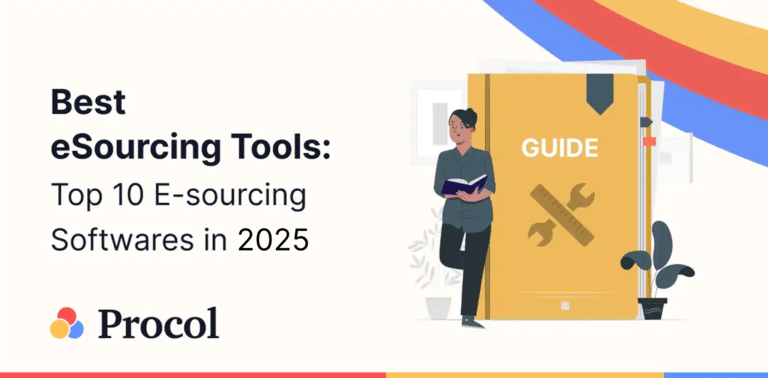
Best eSourcing Tools: Top 10 eSourcing Software in 2025
Discover top 10 e-sourcing tools and esourcing platforms necessary for efficient...
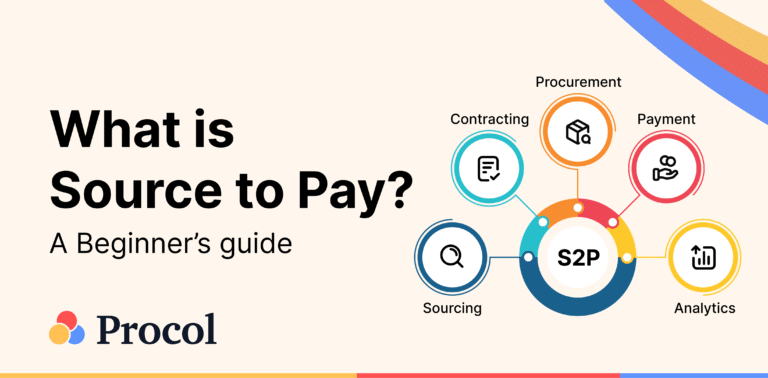
What is Source-to-pay in 2025? An Ultimate Guide
Source to pay is the process of sourcing vendors to procure...
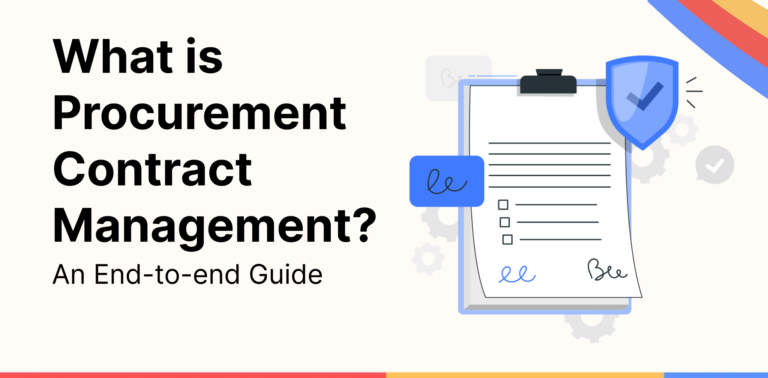
End-to-End Guide to What is Procurement Contract Management?
Wondering what is procurement contract management, then this end-to-end guide explains...


